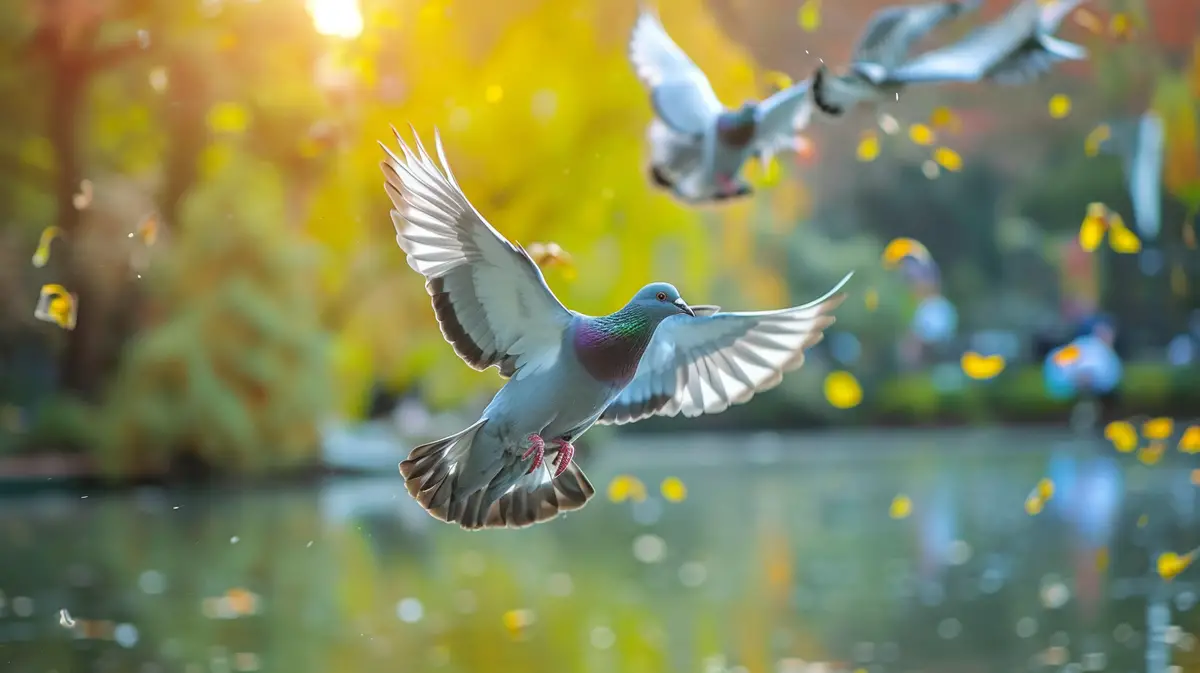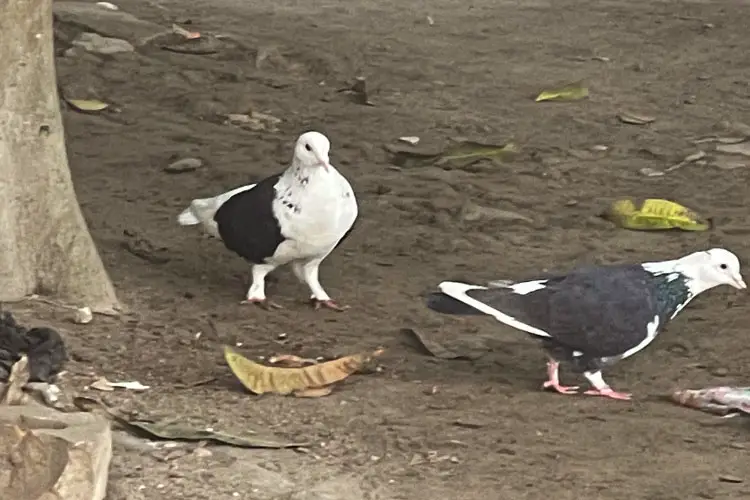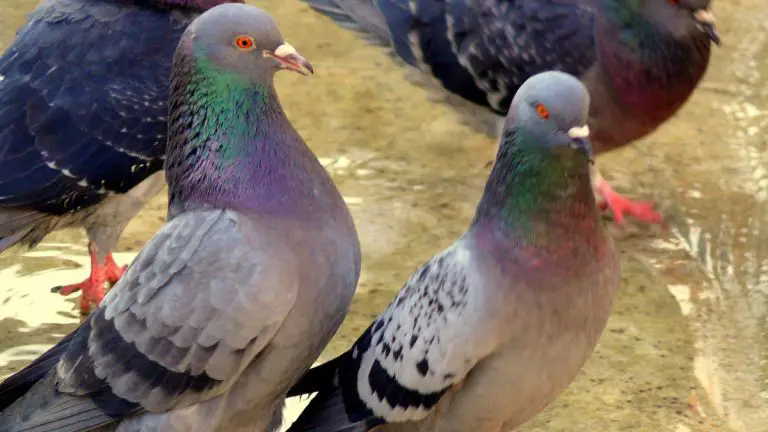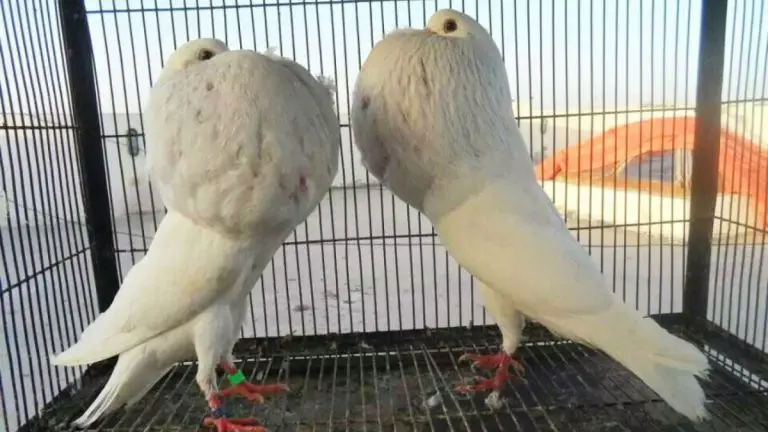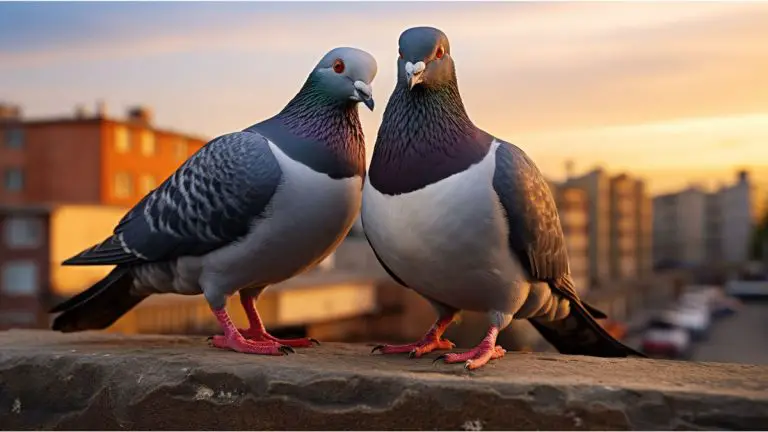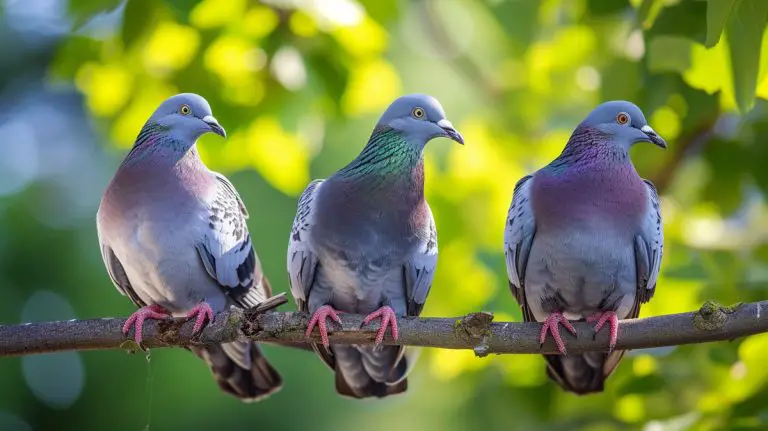Training Pigeons for Shows: Advanced Techniques & Tips
Training pigeons for shows is an art that requires patience, dedication, and a deep understanding of these remarkable birds. As an experienced trainer myself, I have witnessed the sheer joy and amazement that comes from watching a flock of well-trained pigeons perform intricate aerial displays. In this article, I’ll share my insights and tips on how to train pigeons for shows, from selecting the right birds to mastering essential training techniques. So, whether you’re a seasoned pigeon enthusiast or a curious beginner, get ready to embark on an exciting journey into the world of pigeon training and witness the beauty of these feathered performers in action.
When it comes to training pigeons for shows, the first step is to choose the right birds. Selecting pigeons with the right temperament, intelligence, and physical attributes is crucial for a successful training experience. In my years of training, I’ve found that breeds like Homing Pigeons and Fantails are excellent choices due to their natural agility and intelligence. Once you’ve assembled your flock, it’s time to dive into the training process. From basic commands to complex formations, I’ll guide you through the steps necessary to transform your pigeons into show-stopping performers. So, let’s get started and unlock the incredible potential of these incredible birds.
Selecting the Right Birds
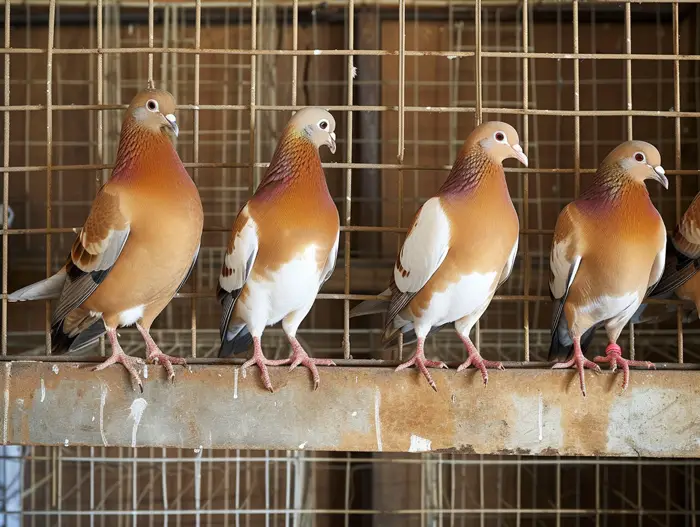
When it comes to training pigeons for shows, selecting the right birds is crucial. The choice of birds can greatly impact the success of your training efforts. Here are some key factors to consider when selecting pigeons for your show:
- Temperament: Look for pigeons with a calm and docile temperament. These birds are easier to handle and train, making the entire process smoother and more enjoyable.
- Intelligence: Opt for pigeons that exhibit higher levels of intelligence. Intelligent birds are faster learners, making it easier for you to teach them various commands and formations.
- Physical Attributes: Consider the physical attributes of the pigeons. Breeds like Homing Pigeons and Fantails are known for their natural agility and grace, which can enhance their performance during shows.
- Health and Fitness: Ensure that the birds you select are in good health and fitness. Healthy pigeons are more likely to respond well to training and perform at their best.
Remember, each bird is unique, so take the time to observe their behavior and assess their suitability for training. Additionally, consider the goals and requirements of your specific show to make the best choices.
By selecting the right birds with the right temperament, intelligence, and physical attributes, you are laying a solid foundation for successful pigeon training. The next step is to begin the training process, teaching them basic commands and gradually introducing more complex formations. But more on that later…
Understanding Pigeon Behavior and Intelligence
When training pigeons for shows, it is important to understand their behavior and intelligence. Observing and assessing these factors will help in selecting the right birds and establishing a solid foundation for successful training.
Pigeons have unique behaviors that can vary from bird to bird. By observing their behavior, we can gain valuable insights into their temperament and suitability for training. Some pigeons may be naturally calm and docile, while others may be more lively and energetic. It is important to select birds that show a calm disposition and a willingness to learn.

Intelligence also plays a crucial role in pigeon training. Pigeons are known for their exceptional homing abilities, but they also possess cognitive skills that allow them to learn and perform complex tasks. They can be trained to recognize and respond to various commands, as well as to perform specific movements and formations.
To gauge the intelligence of a pigeon, it is helpful to assess their ability to learn and retain information. Look for birds that quickly pick up basic commands and show a good memory for learned behaviors. Their ability to problem solve and adapt to new situations is also a reflection of their intelligence.
By understanding pigeon behavior and intelligence, we can select the right birds for training and develop effective training strategies. Building a strong foundation with the right birds will set the stage for successful shows and performances.
Next, let’s delve into the training process and explore how to teach pigeons basic commands and gradually introduce more complex formations.
Setting Up a Suitable Training Environment
Creating the right environment is essential when training pigeons for shows. A suitable training environment helps pigeons feel comfortable, learn quickly, and perform at their best. Here are some important considerations for setting up a conducive training space:
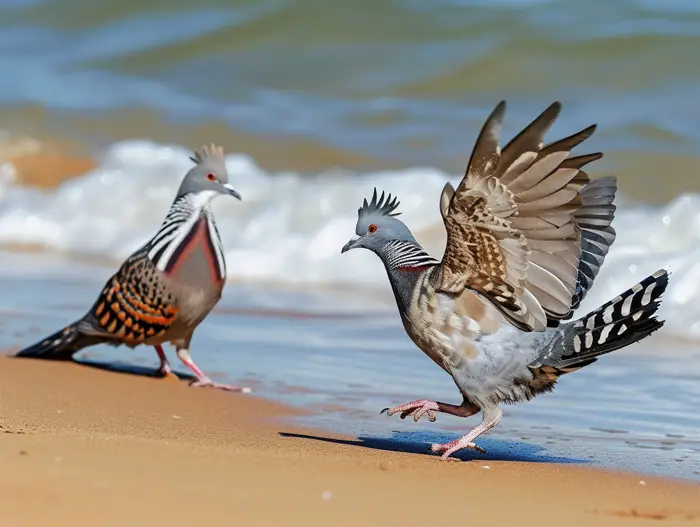
1. Safety First:
Ensuring the safety of the birds is paramount. To prevent accidents or escapes, make sure the training area is enclosed with a sturdy net or fence. This will protect the pigeons from predators and keep them within a controlled space during training sessions.
2. Adequate Space:
Pigeons need room to fly and stretch their wings. The training area should have enough space for the birds to move around freely without feeling cramped. A larger space allows them to practice various maneuvers and helps build their confidence and agility.
3. Good Lighting and Ventilation:
A well-lit and well-ventilated training environment is essential for the well-being of the birds. Natural light helps pigeons navigate and orient themselves, while fresh air circulation ensures a healthy atmosphere. Consider providing shelter or shade during hot weather to protect the pigeons from extreme temperatures.
4. Distraction-Free Zone:
Minimize distractions in the training area to help the pigeons focus on their training. Eliminate loud noises, excessive movements, and other potential disturbances that may divert their attention. This will create a calm and conducive environment for learning and reinforce positive training behaviors.
5. Consistency and Routine:
Establishing a consistent training routine is key to successful pigeon training. Plan regular training sessions at the same time each day to help the birds develop a sense of structure and predictability. Consistency not only helps with their learning progress but also fosters a stronger bond between the trainer and the pigeons.
Remember, creating an optimal training environment is the foundation for successful pigeon training. By providing a safe, comfortable, and distraction-free setting, you are setting the stage for your pigeons to thrive and showcase their skills in show performances.
| Consideration | Importance |
|---|---|
| Safety | Ensures the birds’ well-being |
| Space | Allows for unrestricted flying |
| Lighting and Ventilation | Promotes healthy atmosphere |
| Distraction-Free Zone | Fosters focus and concentration |
| Consistency and Routine | Establishes a predictable |
Building Trust and Establishing a Bond
Building trust and establishing a bond are crucial steps in training pigeons for shows. Developing a strong connection with your birds can greatly enhance their performance and cooperation. Here are a few strategies I have found effective in building trust and establishing a bond with pigeons:
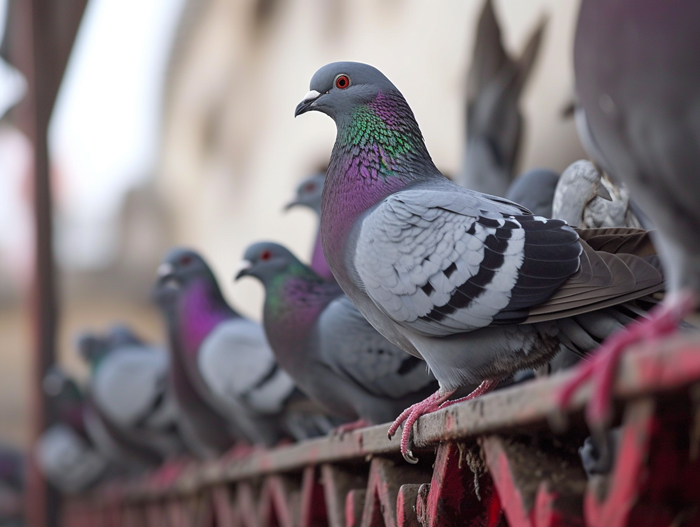
1. Spend Quality Time Together
Spending time with your pigeons consistently allows them to become familiar with your presence and develop trust. Engage in calm and quiet activities around them, such as reading a book or sitting nearby. Over time, they will feel more comfortable around you and begin to associate you with positive experiences.
2. Use Positive Reinforcement
Positive reinforcement is a powerful tool in training pigeons. Rewarding desired behaviors with treats or praise reinforces their understanding of what you expect from them. Consistency and patience are key here – be sure to reward their efforts immediately after they demonstrate the desired behavior.
3. Handle Them Gently
Handling your pigeons with care and gentleness is essential for building trust. Avoid sudden movements or rough actions that might startle or scare them. Approach them calmly and quietly to create a comfortable and stress-free environment.
4. Communicate with Body Language
Pigeons are highly sensitive to body language. By using slow and deliberate movements, you can effectively communicate with your birds. Pigeons can sense your intentions and emotions through your body language, so it’s important to remain calm and composed during training sessions.
5. Establish a Routine
Creating a consistent routine is beneficial for both pigeons and trainers. Pigeons thrive on structure and predictability, so establish a regular training schedule. This helps them feel secure and builds their trust in you as their trainer.
Remember, building trust and establishing a bond with your pigeons takes time and patience. Be consistent, approach training with a calm and positive demeanor, and watch as the connection between you and your birds strengthens. They will be more willing to learn and perform their best, making your pigeon training journey a successful one.
Basic Training Commands
When it comes to training pigeons for shows, establishing a clear set of basic training commands is essential. These commands serve as the foundation for teaching pigeons specific behaviors and actions. By consistently using these commands during training sessions, you can effectively communicate your expectations to the pigeons and achieve desired results.
Here are some basic training commands that you can use when working with your pigeons:
- “Step Up”: This command is used to teach pigeons to perch on your hand or a designated object. It is an important command for handling and transporting the pigeons.
- “Stay”: The “stay” command is crucial for training pigeons to remain in a particular location or position until given further instructions. This command helps in maintaining control and discipline during performances.
- “Fly”: Teaching pigeons to fly on command is a key aspect of training for shows. This command encourages pigeons to take flight and perform aerial maneuvers, adding an impressive visual element to their act.
- “Return”: The “return” command is used to instruct pigeons to come back to their handler or a specific location. It is essential for maintaining control over the pigeons’ movements during a performance.
- “Bow”: Training pigeons to bow on command adds an entertaining and theatrical element to their act. This command is used to teach the pigeons to bend their bodies downwards in a graceful manner.
When using these basic training commands, it’s important to remember a few key points:
- Be consistent: Use the same commands and gestures each time you train your pigeons. Consistency helps reinforce the pigeons’ understanding of the desired actions.
- Use positive reinforcement: Reward pigeons with treats, praise, or other forms of positive reinforcement when they successfully respond to a command. This encourages them to repeat the desired behavior.
- Be patient: Training pigeons takes time and requires patience. Each bird is unique and may require different amounts of time and repetition to learn and respond to commands.
By incorporating these basic training commands into your pigeon training regimen, you’ll build a solid foundation for teaching more complex and impressive behaviors. Remember to be consistent, use positive reinforcement, and remain patient throughout the training process. With dedication and the right approach, you’ll see your pigeons perform with confidence and precision in shows.
Advanced Training Techniques for Aerial Displays
When it comes to training pigeons for aerial displays, there are certain advanced techniques that can take their performance to the next level. These techniques are designed to showcase the agility, speed, and precision of these incredible birds. In this section, I’ll discuss some of the key techniques that can be used to enhance the aerial displays of trained pigeons.
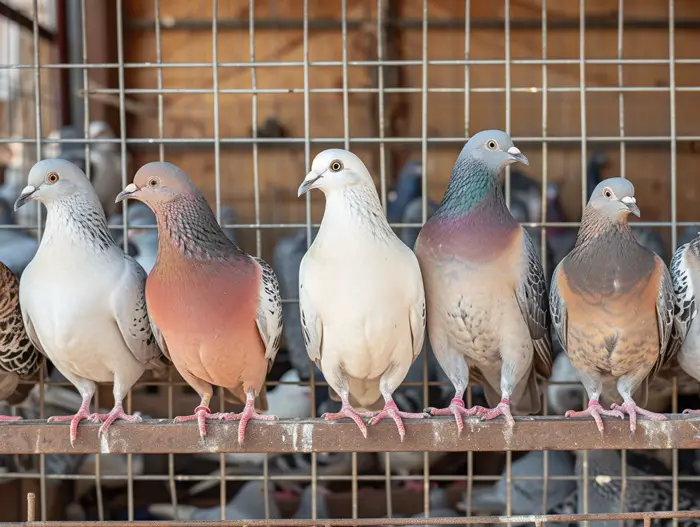
1. Acrobatic Maneuvers
To create a visually stunning aerial display, trainers can teach pigeons a range of acrobatic maneuvers. These maneuvers include flips, spins, and loops that add a sense of excitement to the performance. By introducing gradual progressions and using positive reinforcement, trainers can guide pigeons to master these impressive acrobatic moves.
2. Formation Flying
Another technique to elevate the aerial displays of trained pigeons is formation flying. This involves training the pigeons to fly in synchronized patterns and formations. By teaching birds to maintain specific distances and positions in the air, trainers can create visually striking displays that captivate audiences.
3. Precision Landings
A crucial aspect of aerial displays is the precise landing of pigeons. Trainers can work on training pigeons to land on specific perches or targets with accuracy and grace. This not only showcases the birds’ precision but also adds a unique element to the overall performance.
4. Wingtip Touches
A daring and visually impressive technique is training pigeons to perform wingtip touches. This involves training the birds to gently touch wings in mid-air, creating a stunning display of coordination and control. With consistent training and reward-based methods, pigeons can master this technique, adding an awe-inspiring element to their aerial displays.
5. High-speed Flybys
For a truly thrilling aerial display, trainers can teach pigeons high-speed flybys. This technique involves training the birds to swiftly fly past the audience at impressive speeds. By gradually increasing their flight speeds and reinforcing their performance, pigeons can execute breathtaking flybys that leave the crowd in awe.
Incorporating these advanced training techniques into the training regimen will not only enhance the aerial displays of trained pigeons but also add excitement, precision, and variety to their performances. By using positive reinforcement, patience, and consistent training, trainers can unlock the full potential of these remarkable birds in the air. With each display, they will continue to captivate audiences and showcase the beauty and skill of trained pigeons.
Training for Specific Tricks and Formations
When it comes to training pigeons for shows, it’s important to go beyond the basics and teach them specific tricks and formations. This not only adds variety to their performances but also showcases their intelligence and agility. In this section, I’ll discuss some advanced training techniques that can help you teach your pigeons impressive tricks and formations for an awe-inspiring show.
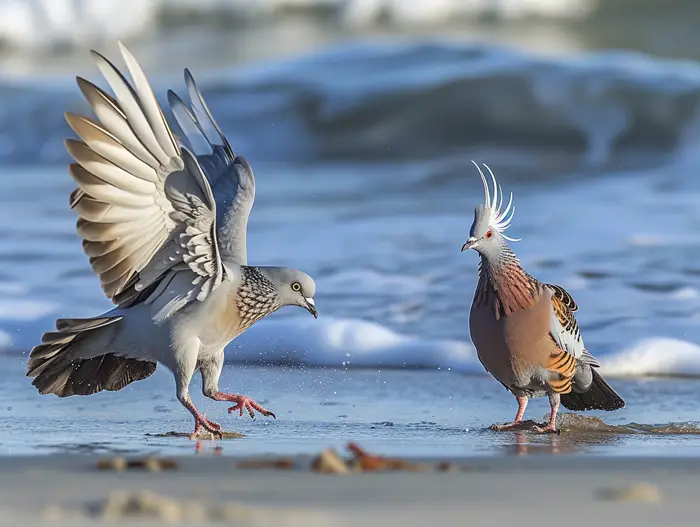
1. Acrobatic Maneuvers
One of the most impressive tricks you can teach your pigeons is acrobatic maneuvers. This includes twists, turns, and flips in mid-air. By gradually introducing these maneuvers in the training process, you can teach your pigeons to perform complex aerial acrobatics that are sure to captivate your audience.
2. Formation Flying
Another fascinating aspect of training pigeons for shows is formation flying. This involves teaching them to fly in synchronized patterns and formations. Start with simple formations, such as flying in a straight line or in a V-shape. As your pigeons become more comfortable, you can progress to more complex formations like circles or figure eights.
3. Precision Landings
Precision landings are a crowd-pleaser and demonstrate the remarkable control that trained pigeons possess. To teach this trick, you’ll need to set up a landing platform or target. Use positive reinforcement and rewards to encourage your pigeons to land accurately on the target. With practice, they’ll be able to make precise landings consistently.
4. Wingtip Touches
Wingtip touches are a visually stunning trick that requires excellent coordination and timing. This involves training your pigeons to touch their wingtips together during flight. Start by reinforcing any natural instances of wingtip touching and gradually shape the behavior to occur on command.
5. High-Speed Flybys
To add an extra element of excitement to your pigeon show, train your birds for high-speed flybys. This involves teaching them to fly at top speed, creating a thrilling visual experience for your audience. Start by gradually increasing their flight speed during training sessions and reward them for reaching higher speeds.
By incorporating these specific tricks and formations into your pigeon training regimen, you can elevate your shows to new heights. Remember to be patient and consistent in your training efforts, as it takes time for pigeons to master these advanced techniques. With dedication and perseverance, you can create a truly captivating performance that will leave your audience in awe.
Addressing Challenges and Troubleshooting
When training pigeons for shows, there may be certain challenges that arise. It’s important to address these challenges promptly and troubleshoot them effectively to ensure a successful training experience. Here are some common issues and how to overcome them:
- Lack of motivation: Sometimes, pigeons may lose interest or become unmotivated during training. To address this, I’ll use positive reinforcement techniques such as rewards and treats to keep them engaged and excited. By rewarding desired behaviors, I can motivate the pigeons to continue learning and performing tricks.
- Difficulty with specific tricks: Certain tricks may be more challenging for pigeons to learn compared to others. To overcome this, I’ll break down the trick into smaller steps and gradually build up to the full maneuver. I’ll use consistent training sessions with plenty of repetition to reinforce the desired behavior. Patience and persistence are key when tackling difficult tricks.
- Distractions and environmental factors: Training pigeons in a show environment can be challenging due to distractions such as noise and crowd movement. To minimize these distractions, I’ll gradually expose the pigeons to similar environments during training sessions. This will help desensitize them and prepare them for the actual show. I’ll also ensure that the training area is quiet and free from unnecessary disturbances.
- Health issues: Pigeons, like any other animals, can sometimes experience health problems that may affect their training. It’s essential to closely monitor their health and seek veterinary care if needed. A healthy pigeon is more likely to be responsive and perform well during training sessions.
- Bonding and trust: Building a strong bond and trust with the pigeons is crucial for successful training. I’ll spend time interacting with them outside of training sessions, providing them with comfort and care. This helps establish a positive relationship and creates a sense of trust between us, leading to better cooperation during training.
By addressing these challenges and troubleshooting them effectively, I can ensure a smooth and successful training experience for pigeons in shows. Remember, training pigeons requires patience, consistency, and a deep understanding of their behavior and needs. With the right approach, you can showcase the intelligence and beauty of these remarkable birds.
Show Preparation and Performance Tips
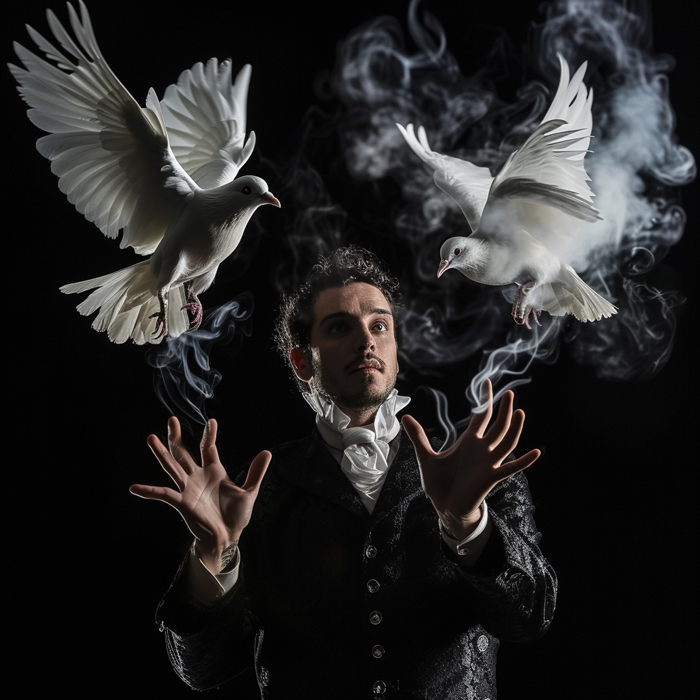
When it comes to training pigeons for shows, preparation and performance are key factors for success. As an experienced trainer, I have learned some valuable tips that can help make your pigeons shine during their performances. Here are some show preparation and performance tips to ensure your birds are ready to impress the audience:
- Practice, Practice, Practice: Consistent practice is essential for training pigeons for shows. Make sure to allocate enough time each day for training sessions to reinforce the tricks and formations your pigeons have mastered.
- Set Realistic Goals: While it’s exciting to push your pigeons to learn new and advanced techniques, it’s important to set realistic goals. Gradually introduce new tricks or formations, building upon the foundation of previous training. This approach will help prevent frustration and allow your pigeons to progress at a steady pace.
- Create a Routine: Establishing a routine helps pigeons feel comfortable and familiar with the training process. Consistency in training times and locations will build their confidence and ensure they are prepared to perform on cue.
- Reward and Reinforce: Positive reinforcement is a powerful tool in training pigeons. Reward your birds with their favorite treats or praise when they successfully execute a trick or formation. This will motivate them to continue performing well and enhance their enthusiasm during shows.
- Manage Distractions: During shows, there can be various distractions that may cause your pigeons to lose focus. Train your birds in different environments and gradually introduce distractions to help them become accustomed to performing under varied conditions.
- Bond and Communicate: Building a strong bond with your pigeons is crucial for effective training. Spend time getting to know each bird’s personality, and develop a communication system that works for both of you. This will enhance trust and improve communication during performances.
Remember, training pigeons for shows takes patience, dedication, and understanding. By following these show preparation and performance tips, you can ensure that your pigeons are ready to impress and captivate audiences with their intelligence, agility, and skill. Don’t forget to enjoy the journey and celebrate each milestone your pigeons achieve along the way. Happy training!
| No. | Tips |
|---|---|
| 1 | Practice consistently to reinforce trained techniques |
| 2 | Set realistic goals to avoid frustration |
Conclusion
Training pigeons for shows requires dedication, patience, and a deep understanding of their capabilities. Throughout this article, I have discussed advanced training techniques that can be used to showcase the intelligence, agility, and control of these remarkable birds.
From acrobatic maneuvers to precision landings, pigeons can be trained to perform a wide range of tricks and formations. By consistently practicing and setting realistic goals, trainers can help their pigeons excel in show performances.
Positive reinforcement and building a strong bond with the pigeons are crucial aspects of successful training. By using these methods, trainers can create a routine that allows for effective communication and minimizes distractions.
The art of training pigeons for shows is a testament to the remarkable abilities of these birds. Through patience, dedication, and understanding, trainers can unlock their full potential and create captivating performances that leave audiences in awe. So, if you’re considering training pigeons for shows, remember to approach it with passion and a commitment to excellence.
